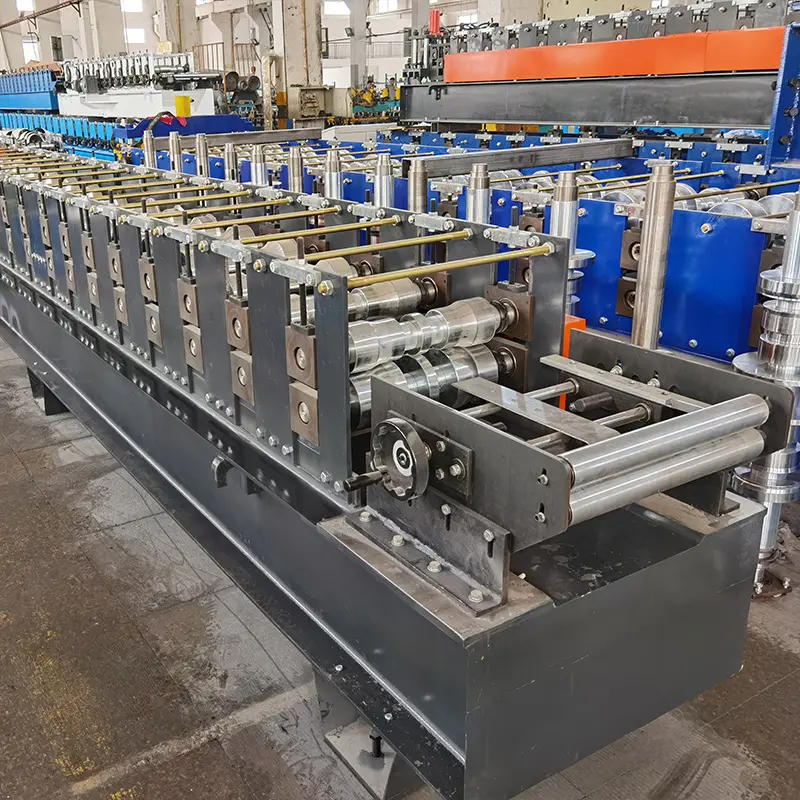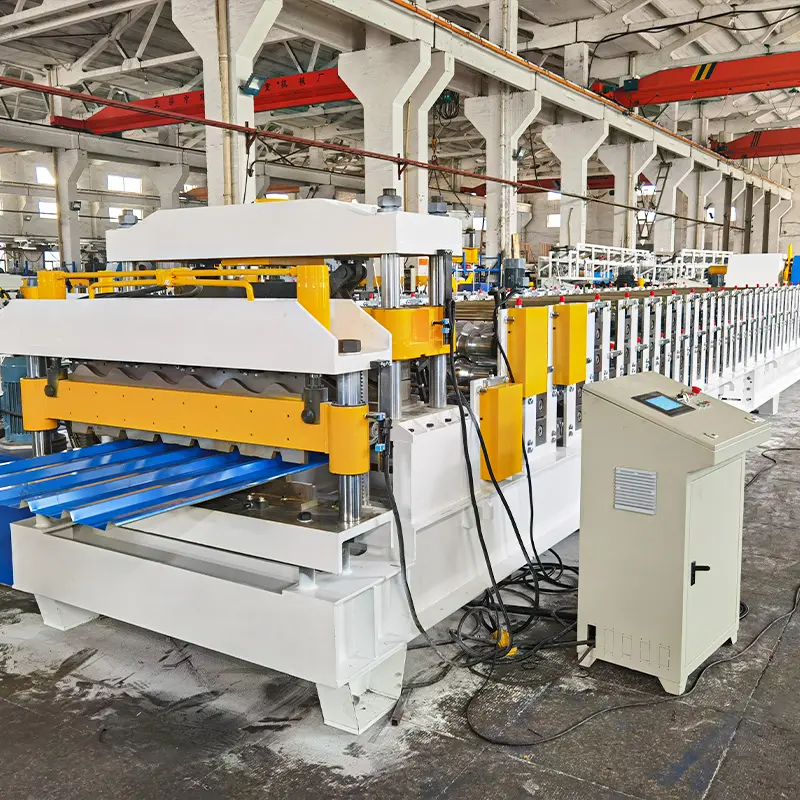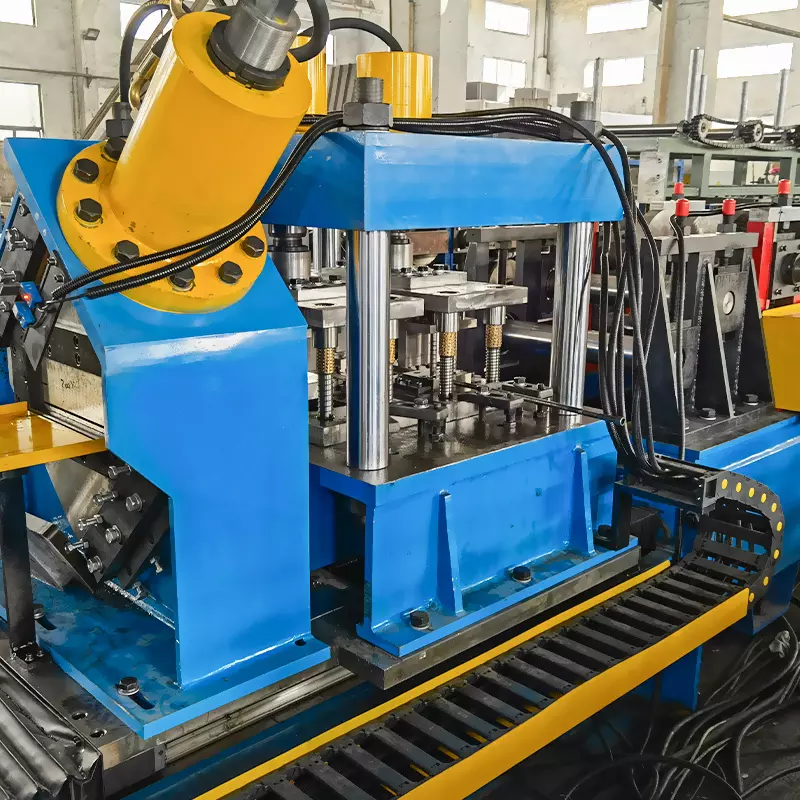ভূমিকা
In the construction industry, speed, efficiency, and precision are vital factors for success. One innovation that has significantly impacted the roofing sector is the Roof Roll Forming Machine. This article explores the ins and outs of this remarkable machine, how it works, its benefits, and much more.
What is a Roof Roll Forming Machine?
A Roof Roll Forming Machine is a specialized equipment used in the roofing and construction industry to fabricate metal sheets into consistent and customized shapes. It is a continuous process where the metal coil is passed through a series of rollers that gradually bend and form the metal into the desired profile.
How Does a Roof Roll Forming Machine Work?
The Roof Roll Forming Machine operates on a simple principle, but its execution requires precision engineering. The process begins with the feeding of a metal coil into the machine. As the coil moves through the rollers, it undergoes a series of forming steps until it reaches the desired shape. The machine’s computerized controls ensure accuracy and consistency throughout the process.

Advantages of Using a Roof Roll Forming Machine
Using a Roof Roll Forming Machine offers several advantages, making it a preferred choice for roofing manufacturers:
- Increased Efficiency: The machine’s continuous process allows for high-speed production, reducing manual labor and significantly increasing efficiency.
- Cost-Effectiveness: Despite the initial investment, the long-term cost savings from reduced labor and material waste make it economically viable.
- Versatility: Roof Roll Forming Machines can produce a wide range of roofing profiles, offering customization options for various architectural needs.
- Consistency and Precision: The computerized controls ensure consistent quality, minimizing errors and variations in the final product.
Different Types of Roof Roll Forming Machines
Roof Roll Forming Machines come in various configurations to meet different production needs. Some common types include:
Single Layer Roof Roll Forming Machine
This type of machine produces single-layered roofing sheets and is ideal for simple roofing applications.
Double Layer Roof Roll Forming Machine
Double Layer Roof Roll Forming Machines can produce two different profiles simultaneously, offering enhanced productivity and flexibility.
Automatic Roof Roll Forming Machine
Automatic Roof Roll Forming Machines integrate advanced automation, reducing the need for manual intervention and further improving efficiency.
Manual Roof Roll Forming Machine
Manual Roof Roll Forming Machines are suitable for small-scale production or when manual control is preferred.
Factors to Consider When Choosing a Roof Roll Forming Machine
Selecting the right Roof Roll Forming Machine for your business requires careful consideration of the following factors:
Material Compatibility
Ensure that the machine is compatible with the metal or material you intend to use for your roofing sheets.
Production Speed
Consider the required production speed to meet your demand and deadlines.
Customization Options
If you need to produce a variety of profiles, choose a machine that offers easy customization capabilities.
Durability and Maintenance
Look for a machine with durable components and easy maintenance requirements to minimize downtime.

How to Operate a Roof Roll Forming Machine?
Operating a Roof Roll Forming Machine requires proper setup, preparation, and careful execution. Here is a step-by-step guide:
Set-Up and Preparations
Ensure the machine is correctly installed, calibrated, and connected to a power source.
Loading the Material
Carefully load the metal coil into the machine, making sure it is aligned correctly.
Running the Machine
Start the machine and monitor the forming process, adjusting the settings as needed.
Quality Control and Inspection
Regularly inspect the formed sheets for quality, and make necessary adjustments to maintain consistency.
Unloading the Finished Product
Once the process is complete, safely unload the finished roofing sheets from the machine.
Common Issues and Troubleshooting with Roof Roll Forming Machines
Even with proper maintenance, Roof Roll Forming Machines may encounter issues. Here are some common problems and troubleshooting tips:
Material Jamming
Identify the source of the jam, and clear the obstruction carefully to avoid damage to the machine or material.
Uneven Roll Forming
Check for misalignment in the rollers and adjust as needed to ensure even forming.
Alignment Problems
Ensure all components are properly aligned to prevent inaccuracies in the final product.
Machine Maintenance Tips
Regularly lubricate moving parts, inspect electrical connections, and keep the machine clean to extend its lifespan.

Safety Precautions When Using a Roof Roll Forming Machine
Safety should always be a priority when operating any machinery. Here are some essential safety precautions:
- Wear appropriate personal protective equipment (PPE) such as gloves, safety glasses, and ear protection.
- Keep the work area clean and organized to minimize tripping hazards.
- Follow the manufacturer’s guidelines for safe machine operation.
- Never reach into the machine while it is running or attempt to make adjustments during operation.
Applications of Roof Roll Forming Machines
Roof Roll Forming Machines find applications beyond the roofing industry. They are also used in manufacturing:
- Wall cladding panels
- Steel framing systems
- Garage doors
- HVAC ducting
Future Trends in Roof Roll Forming Technology
As technology continues to advance, the Roof Roll Forming Machines of the future may incorporate:
- More advanced automation features for increased efficiency
- Integration with computer-aided design (CAD) software for seamless customization
- Enhanced material compatibility for a broader range of roofing materials

উপসংহার
Roof Roll Forming Machines have revolutionized the roofing industry by offering speed, efficiency, and precision in the production of metal roofing sheets. These machines have become indispensable for roofing manufacturers, allowing them to meet the demands of the modern construction industry.
With their ability to produce a wide range of profiles and consistent quality, Roof Roll Forming Machines have brought about a transformation in the way roofs are manufactured. They have replaced traditional manual methods that were time-consuming and prone to errors. By automating the process, these machines have significantly reduced labor costs and material waste, making roofing projects more cost-effective and environmentally friendly.
Moreover, the versatility of Roof Roll Forming Machines extends beyond roofing applications. They are also used in the production of wall cladding panels, steel framing systems, garage doors, and HVAC ducting. This widespread use showcases the machine’s adaptability and contribution to various aspects of the construction industry.
As technology continues to advance, the future of Roof Roll Forming Machines looks even more promising. Manufacturers are likely to integrate more advanced automation features, enabling seamless integration with computer-aided design (CAD) software. This will allow for more intricate and customized designs to meet the growing demands of architects and builders.
In conclusion, the Roof Roll Forming Machine has revolutionized the roofing industry and beyond. Its ability to produce high-quality roofing sheets with speed and precision has transformed the way roofs are manufactured. As technology evolves, these machines will continue to play a vital role in shaping the construction industry, making it more efficient, cost-effective, and sustainable.
FAQs
- How long does it take to set up a Roof Roll Forming Machine?The setup time for a Roof Roll Forming Machine varies depending on the complexity of the machine and the level of automation. Generally, it may take a few hours to a day for proper installation and calibration.
- Can a Roof Roll Forming Machine work with different types of metals?Yes, Roof Roll Forming Machines can work with various metals, such as galvanized steel, aluminum, and stainless steel. However, it is essential to ensure that the machine is compatible with the specific material you intend to use.
- What is the typical production speed of a Roof Roll Forming Machine?The production speed of a Roof Roll Forming Machine depends on the machine’s design and the complexity of the profile being formed. It can range from 10 to 100 feet per minute.
- Is regular maintenance required for a Roof Roll Forming Machine?Yes, regular maintenance is crucial to ensure the smooth operation and longevity of the machine. Lubricating moving parts, inspecting electrical connections, and keeping the machine clean are some essential maintenance tasks.
- Can Roof Roll Forming Machines be used for other applications besides roofing?Yes, Roof Roll Forming Machines have applications beyond roofing. They are used in the manufacturing of wall cladding panels, steel framing systems, garage doors, and HVAC ducting.
